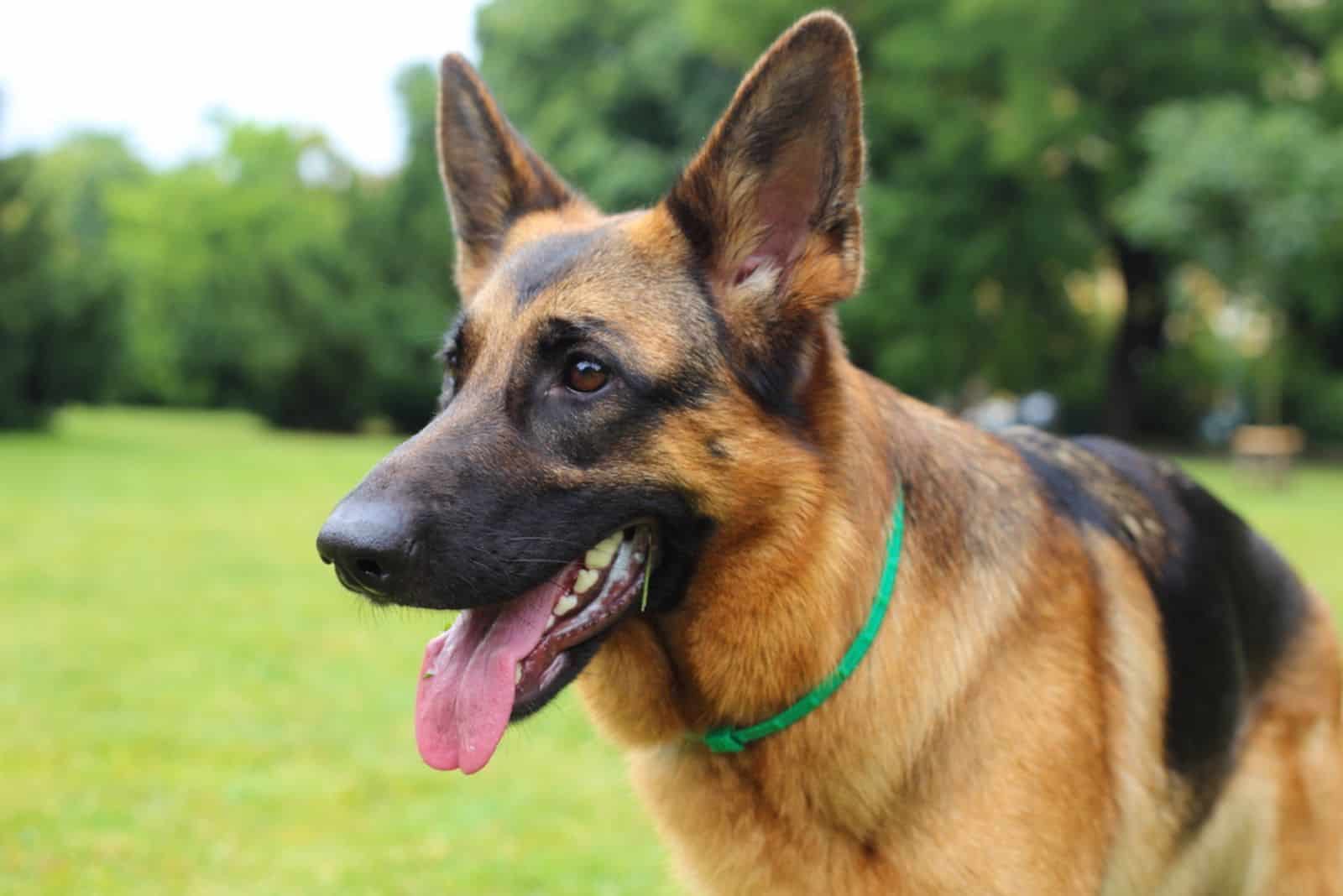There are many reasons why the full-blooded German Shepherd is one of the most well-liked dog breeds in America. They are capable and intelligent working dogs, unsurpassed in their devotion, loyalty, and bravery. They are also incredibly versatile.
GSDs are excellent in almost everything they are trained to do, including being faithful friends, guides for the disabled, members of the military or police, cattle herders, search and rescue dogs, narcotics detectors, and even show dogs.
In this breed guide, we will explain how to identify a full-blooded German Shepherd, and we will also provide some interesting facts about the breed’s history, appearance, personality, and health.
Full-Blooded German Shepherd
The German Shepherd Dog is a big, agile, muscular dog with a noble spirit and supreme intelligence. The German Shepherd is unquestionably a dog lover’s dream dog because of its loyalty, bravery, and steadiness.
GSDs are among the most coveted breeds for a variety of reasons, but their most distinctive quality is their strength of character. Simply put, they are willing to put their lives on the line to protect those they love.
In the following segment, we will give you a guide on how to recognize a full-blooded German Shepherd.
How To Recognize A Full-Blooded German Shepherd
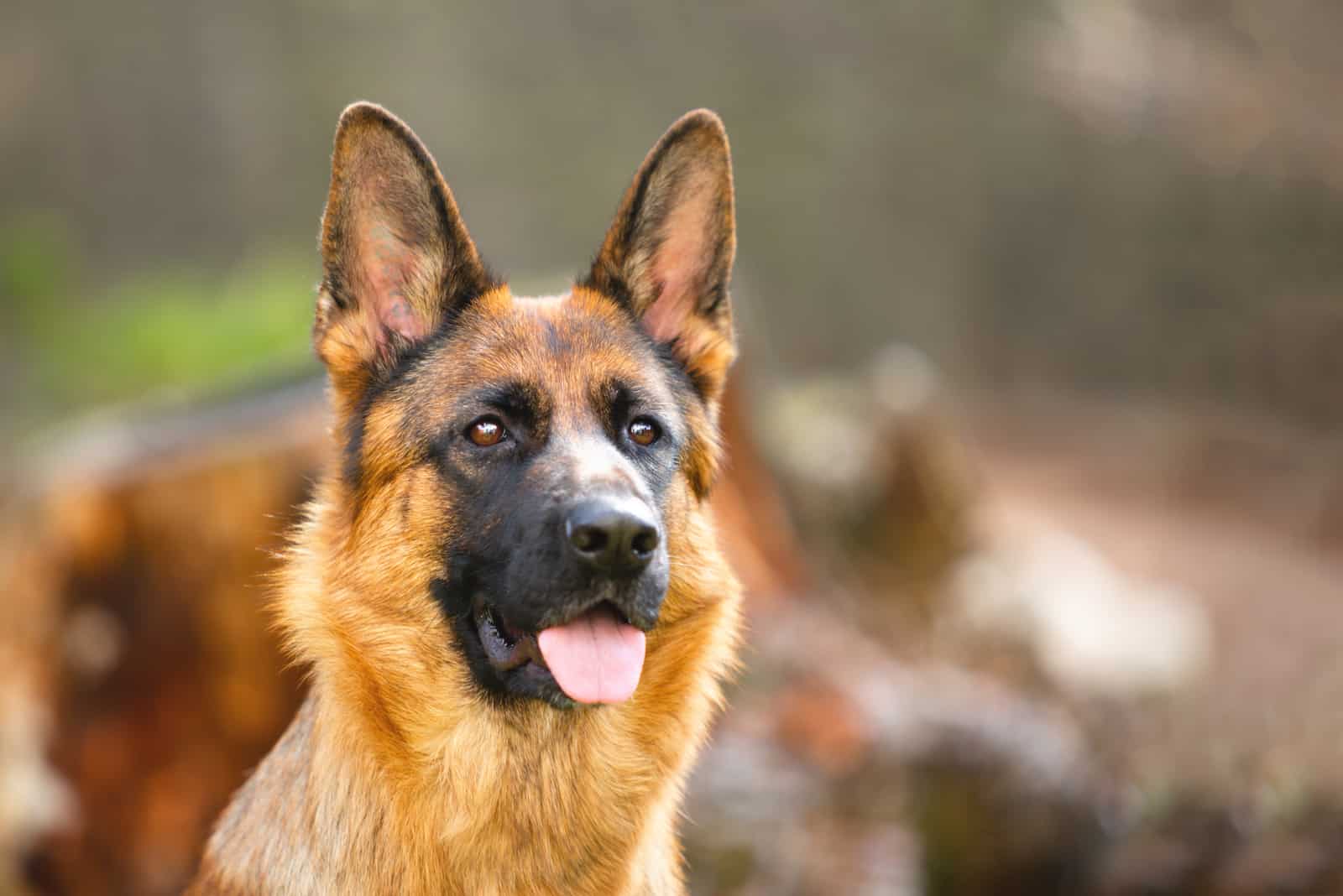
So how do you recognize a German Shepherd that is purebred?
Purebred German Shepherds are those who were born from parents of the same breed. As a result, you may make accurate predictions about their personality and looks based on the recognized breed standard.
However, you must first establish that your GSD is a genuine purebred, and that might be challenging to do based just on appearance.
This is due to the fact that a number of other dog breeds, like the Belgian Malinois, for example, have traits that are similar to GSDs.
Additionally, there can be a lot of German Shepherd mixes that look like they are full-blooded, but they actually aren’t.
But that doesn’t mean that it is impossible to recognize a purebred German Shepherd. Below are several methods that you can use to identify one.
DNA Testing
Let’s start with the most obvious solution: dog DNA testing. Getting a DNA test for your dog has extra advantages, and such tests are widely available and incredibly accurate, but they aren’t exactly cheap.
You can purchase a kit online, even on places like Amazon, and it arrives at your house in the mail. Some of these DNA tests can not only determine the purity of your dog, but they can also check for a wide range of hereditary illnesses.
These kits typically come with a pre-paid return box or envelope and sealable plastic bags for the swabs. Once you’ve taken a sample with the swabs, just send them back and wait for your results, which typically take around a month to arrive.
The German Shepherd Coat
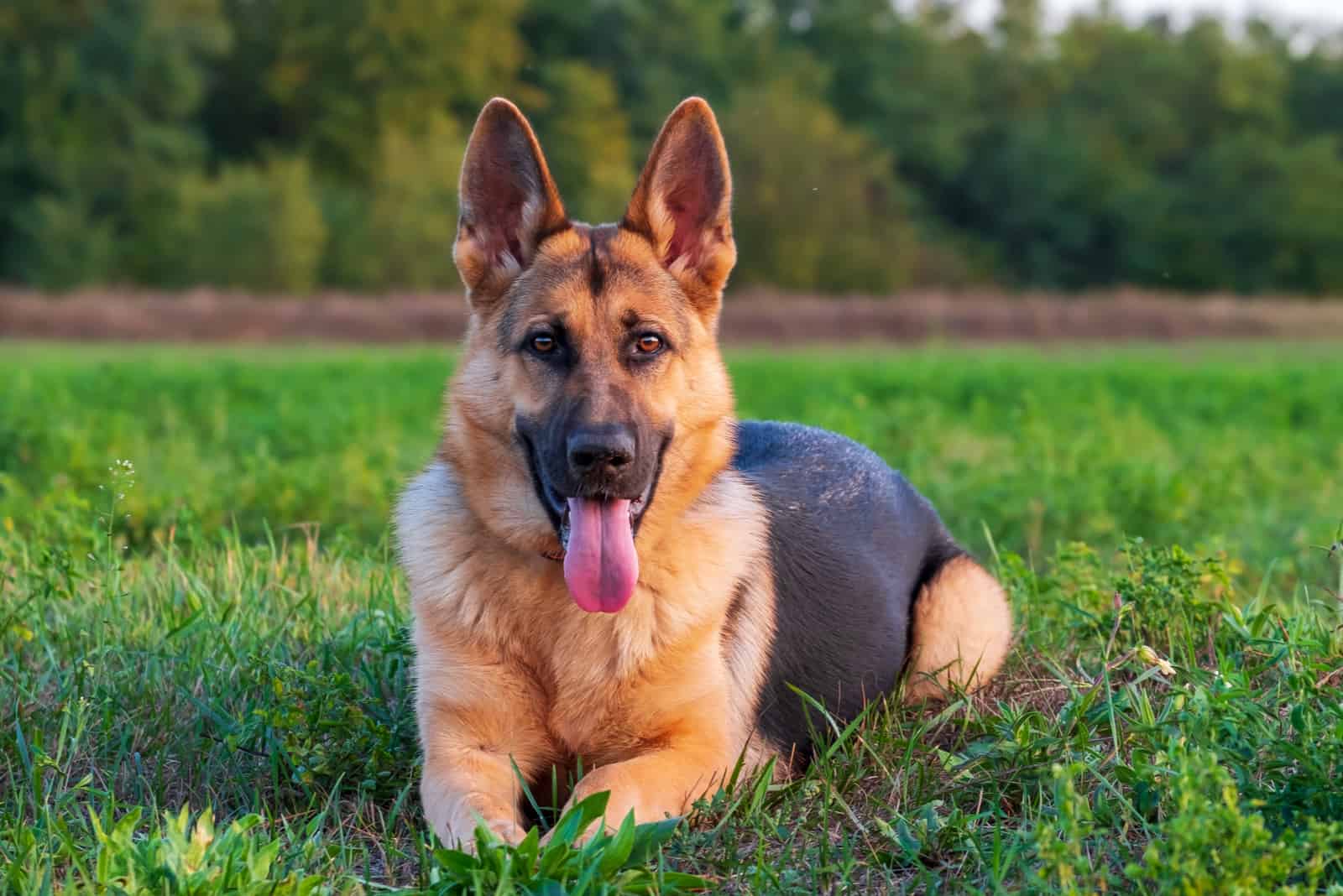
One of the distinguishing characteristics of breed distinctiveness that is included as part of the breed standard is a dog’s coat. By examining your dog for certain coat characteristics, you can determine whether or not it is a purebred German Shepherd.
A German Shepherd can, in fact, be distinguished from other breeds, including its crossbreeds, by carefully examining its coat. Here are some tips on how to do it and what to look for.
Coat Type
The GSD’s official breed standard, according to the AKC, is a medium-length double coat with hard, straight hair that is close to the body. It is generally preferred over a long-haired coat.
Although a somewhat wavy outer coat is okay, it should generally be flat and dense.
The hair that covers their head is typically shorter, while their neck hair is slightly longer and thicker. The hair on the paws and legs is also short, but it gets noticeably longer towards the back of the legs.
Although many German Shepherds kept as household pets have long coats, the short double coat, with a thick undercoat, is thought to be the norm for the breed.
Coat Color
There are several different German Shepherd coat colors, but the most common combinations are black and tan, black and red, sable, as well as some other bi-color patterns.
We also have to mention the black German Shepherd, which is a very rare occurrence, but is incredibly gorgeous and considered to be one of the most desirable coats among many GSD owners.
When it comes to AKC registration, they don’t accept colors such as white, liver, and blue.
These variations in coat color make it more complicated to determine once and for all that your German Shepherd is indeed purebred. Which is why you often have to take into account other features.
Other German Shepherd Physical Features
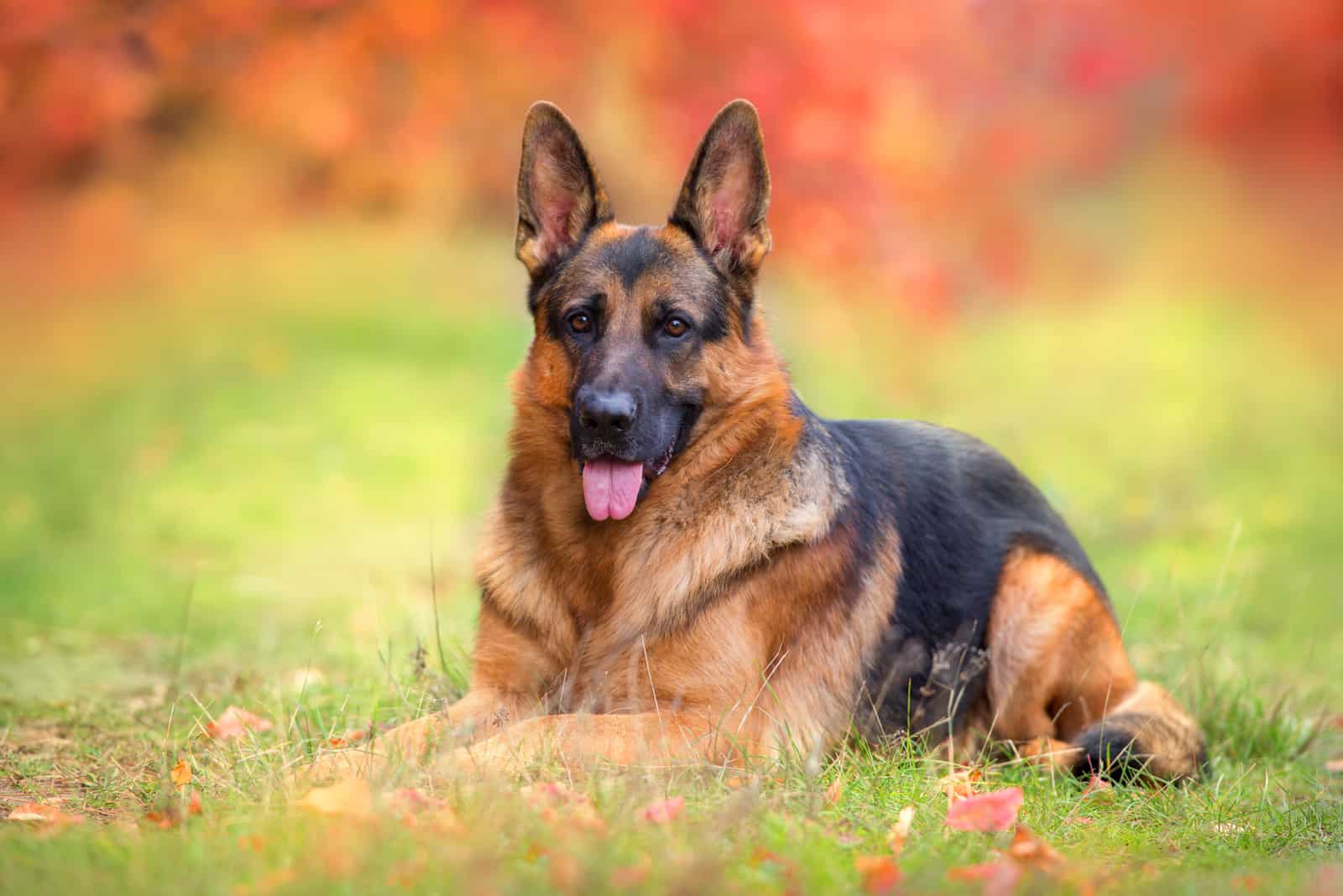
The German Shepherd’s coat type and color can be taken into account with the breed’s other physical characteristics to help you determine your GSD’s genetic heritage.
There are a few distinguishing physical traits of the purebred German Shepherd you should search for. These include its body type, ears, and tail.
Body Type
Your dog is probably a purebred if its body is powerful, proportional, muscular, and nimble.
The German Shepherd’s robust, towering build plays a role in why it makes a great working dog. German Shepherds typically stand up to 26 inches tall and weigh between 77 and 85 pounds.
They are large, muscular dogs with sloping front legs and shoulders and a deep, narrow chest.
Ears
One of the German Shepherds’ most well-known distinguishing characteristics is their pointed ears.
There’s a solid reason why these are among the German Shepherd’s most adored physical characteristics! You can see the German Shepherd puppies’ ears rising and falling as they develop, with one ear possibly standing upright while the other does not.
However, until the teething phase is complete, your German Shepherd’s ears might not stand up straight. This indicates that your German Shepherd is going through the adolescent stage, during which they are growing and forming cartilage in their ears in addition to teething.
Check to see whether your GSD has upright ears when it hears a sound, barks, or becomes agitated if it is in the teething stage, which finishes between weeks 16 and 20. If that occurs, even briefly, your puppy’s ears will remain permanently upright following the teething stage.
The triangle-shaped ears of the German Shepherd are lengthy at the base. Even though this is a hallmark of German Shepherds, occasionally they will not stand straight.
Be aware that in adult purebred German Shepherds, drooping ears may indicate health issues or be the result of grooming practices. A GSD with docked ears is typically disqualified under breed standards.
Tail
A large, thick, and bushy tail is yet another cherished aspect of the German Shepherd’s physical appearance. The German Shepherd’s bushy tail frequently hangs low to the ground while the dog is resting.
The tail is somewhat elevated and the curvature is more prominent when they’re animated or moving.
German Shepherd Behavior

Apart from their physical attributes, German Shepherds are primarily recognized for particular behavioral traits, both good and bad. These behavioral traits include high energy levels, loyalty, intelligence, and protectiveness, among others.
High Energy Levels
Be ready for the tremendous degree of energy that a German Shepherd will bring to your household if you’re thinking about getting one.
German Shepherds require a lot of daily activity, ideally in a backyard where they can burn off some steam in between walks.
A German Shepherd is likely to become bored if not given enough exercise and left alone for extended periods of time, which can result in destructive behavior like chewing, digging, and loud barking.
Strong Sense Of Loyalty
Although German Shepherds are renowned for their loyalty and strong familial bonds, don’t expect them to cling to strangers right away.
They typically make great family pets, but German Shepherds may not always be the greatest choice for someone with no experience with dogs because they can be fiercely protective of their families if they feel threatened.
As a German Shepherd owner, you must be aware that your dog will take some time to warm up to new people and won’t necessarily like everyone they meet.
Superior Intelligence
German Shepherds are outstanding working dogs partly due to their high intelligence. There is a considerable probability the dog has German Shepherd blood in them if they exhibit great trainability and obedience.
German Shepherds are frequently seen helping the police with critical tasks like drug detection, security, and search and rescue. Aside from being police dogs, they make excellent watchdogs, service dogs, and guide dogs for people who are blind.
Dog training, and especially obedience training classes are beneficial for German Shepherds and also serve to provide your dog with entertainment and mental stimulation.
Protectiveness And Possession
German Shepherds are devoted and obedient animals, especially to their families, which unquestionably makes them a fantastic choice if your family is looking for a guard dog.
German Shepherds make excellent sheepherders because of their sense of ownership and possession. This breed develops a sense of what is theirs, and they are quick to recognize when a possible threat is nearby.
If they occasionally have trouble differentiating between a stranger and a potential threat, don’t be shocked.
Your German Shepherd might be wonderful with you and your children, but behave guardedly or defensively towards other people or kids. To ensure that your German Shepherd is not acting needlessly aggressively or territorially, further training is required in this situation.
Does The German Shepherd Have Papers?
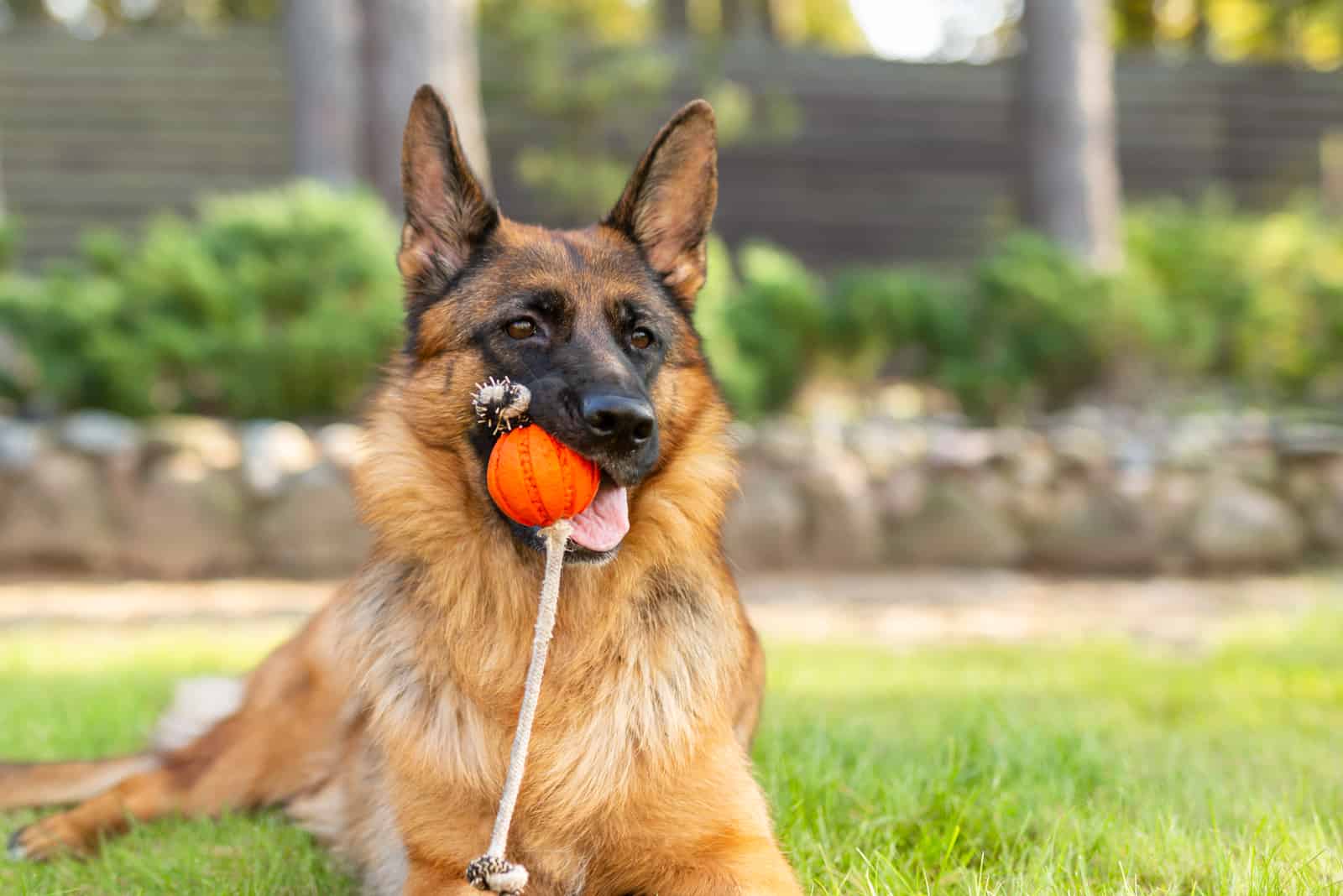
One of the easiest ways to check if your German Shepherd is full-blooded is to simply check the associated paperwork.
Of course, not all dogs will come with papers, so if you adopted your pup from a shelter or a rescue, you are probably out of luck on this front.
However, if you purchased a German Shepherd puppy from a breeder, they should be able to provide all the related paperwork that shows details about its bloodline, health, pedigree, etc.
Registration Certificate
The official record of a puppy’s birth with a registry, such as the AKC, is called a dog registration certificate. What we commonly refer to as “a dog with papers” is actually a registered dog.
No matter if your dog is a purebred or a mixed breed, dog registries will keep track of ownership and breeding.
A registration certificate for a German Shepherd only provides information on the parents’ names and breed and only goes back one generation. That ought to indicate if your German Shepherd’s parents were of the same breed or not.
However, the owner or breeder is the one who self-reports the data to a dog registration. The registration depends on the breeder’s or owner’s honesty rather than conducting background checks to verify the information.
The likelihood of a German Shepherd being full-blooded, however, is higher for one with a registration certificate that lists parents of the same breed, indicating that it is purebred, than for one without a certificate.
You may wish to combine some of the above techniques with examining the dog’s registration certificate to determine if your German Shepherd really is purebred.
Pedigree
A dog pedigree is a birth certificate for your dog that also details the bloodlines of the dog’s ancestors going back at least three generations.
The dog’s registration certificate and pedigree papers should be included in your purebred German Shepherd documents. Pedigree papers will also display your dog’s physical characteristics, such as the color of its coat and any awards it or any dogs in its bloodline may have received.
A dog’s pedigree provides more evidence that your German Shepherd is a purebred than a normal dog registration certificate does.
Asking The Experts

Like with most things in life, if you don’t know something, the best way to find out is usually to ask someone who does.
When it comes to identifying full-blooded German Shepherds, there are essentially three types of people that you can reach out to and ask them about the purity of your GSD. Those three types are German Shepherd owners, breeders, and vets.
Each of them will have some experience that will enable them to help you out with any questions you might have, and the information they can provide could prove to be priceless.
German Shepherd Owners
You may learn a lot about the breed from someone who has owned a purebred German Shepherd for a long time and has observed the physical and psychological characteristics of the breed.
Choose a purebred German Shepherd owner whose dog you admire and who appears to have taken good care of it. Most GSD owners will be happy to talk to you about their furry friends and perhaps even show you pictures and videos of their development.
Related: German Shepherd Growth Chart: How Big Your GSD Will Be?
Videos and pictures of another purebred German Shepherd can give you particular information on identifying physical characteristics and temperamental aspects in your own dog.
German Shepherd Breeders
Ask a reputable breeder as many questions as you can about the German Shepherd. Ask to see documentation proving that the American Kennel Club has recognized both parents and the breeder as having a license if you’re thinking about buying your German Shepherd from this breeder.
Furthermore, inquire about the temperaments and dispositions of the dog’s parents, as well as any apparent health issues. Unfortunately, a breeder might not be totally honest about bad information, so do your research before buying a German Shepherd puppy from them.
If you don’t want to buy a puppy from them and you’re just looking for information, you can still probably find a breeder who is forthcoming enough to give you some tips.
Reputable German Shepherd breeders can provide you with trustworthy information on the disposition and personality of the German Shepherd dog, important characteristics of purebred German Shepherds, and how they look in different developmental phases.
Veterinarians
Veterinarians can offer a wealth of useful knowledge regarding German Shepherds. They can provide you with information about their personal interactions with the breed and assist you in identifying physical traits.
Ask your veterinarian to give you their opinion on whether they think your dog is a German Shepherd if you already own one but aren’t sure.
Let’s say you already have the purebred dog you are attempting to identify. Then you can take your dog to a veterinarian with extensive knowledge of German Shepherds and ask them to evaluate the dog’s physical, temperamental, and behavioral characteristics.
As an alternative, you can describe to the vet the traits and actions you have noticed in your dog, and the vet will be able to tell you whether or not they are characteristic of the breed.
About The German Shepherd Dog Breed

The German Shepherd Dog, also known as the Alsatian in parts of Europe and Great Britain, ranks among the top ten most popular dog breeds in the United States and is arguably one of the most well-known breeds on the entire globe.
German Shepherd Breed History
A career commander in the German cavalry, Captain Max von Stephanitz set out to develop a German breed that would be unrivaled as a herding dog, and his efforts resulted in the creation of the German Shepherd, a relatively recent breed that dates back to 1899.
They owe a portion of their fame to a young puppy that Corporal Lee Duncan saved from a breeding facility in France that had been bombed and shot up during World War I.
After the war, Duncan transported the pup back to Los Angeles, where he raised and trained him to become Rin Tin Tin, one of the most well-known canines in the entertainment industry.
Rin Tin Tin continued to act in several films and, at the height of his fame, received 10,000 admirer letters each week.
But acting isn’t the only thing the German Shepherd is good at. In fact, they are great in many things, including herding livestock, guiding the blind, tracking down criminals, smelling out illegal substances, and serving in the military.
German Shepherd Personality And Temperament
Although the German Shepherd embodies many of the best qualities of dogs, not everyone will like having one. Being a high-energy dog that was originally bred to herd flocks all day, they require a lot of activity and exercise.
They are not aggressive by nature, but without enough stimulation, they could exhibit boredom and annoyance through undesirable behaviors like barking and chewing.
The breed is also aloof and somewhat suspicious, making it a terrific watchdog but not the kind of family pet that will make visitors feel welcome.
A German Shepherd may learn to cope with new people and settings, though, if you expose them to a wide variety of situations and people from the time they are puppies.
Common Health Issues In German Shepherds
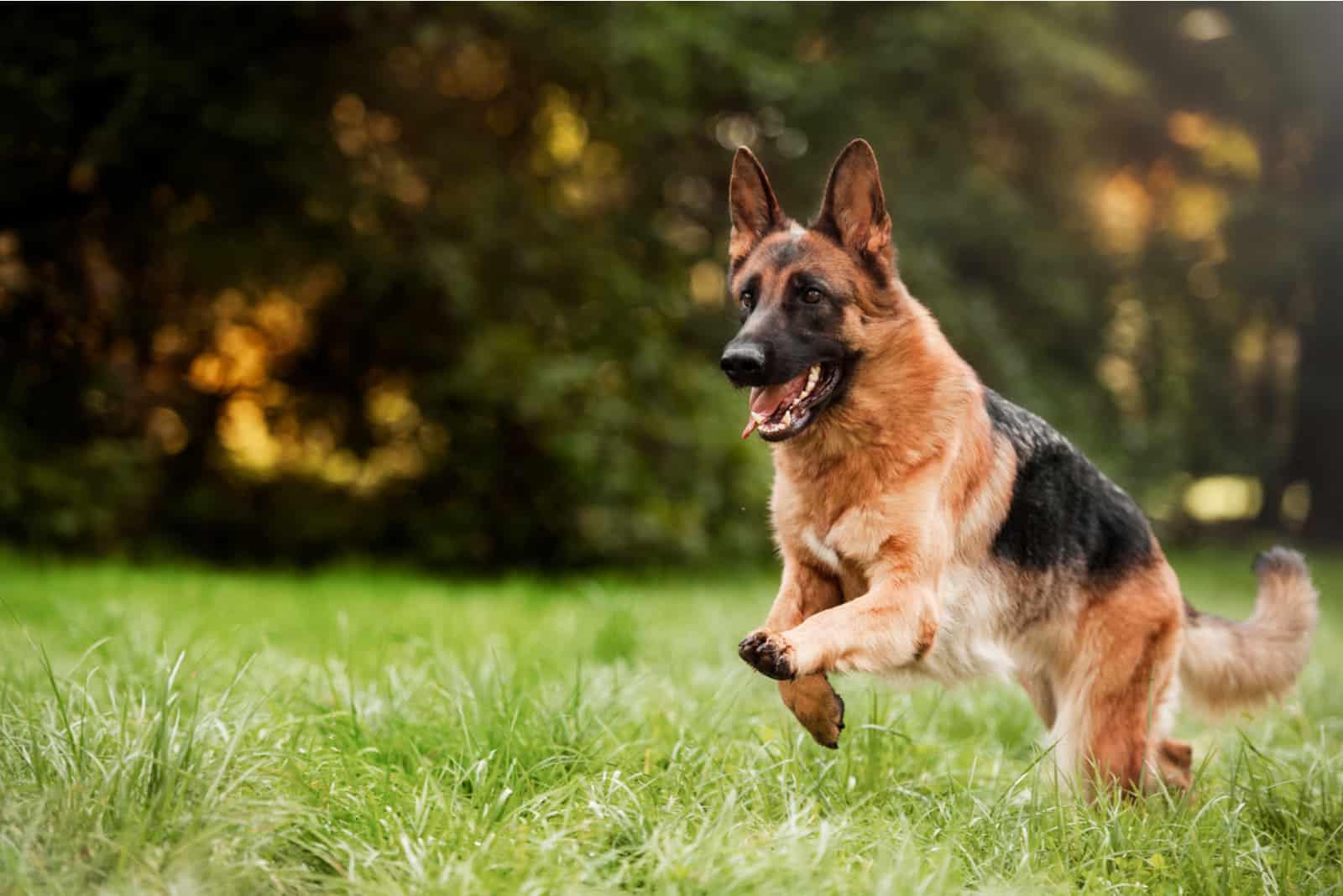
Although German Shepherds are generally in good health, they are susceptible to some health issues like all breeds. If you’re thinking about getting a German Shepherd, it’s vital to be aware of these diseases even though not all of them will affect your dog.
Some health problems are more common in some breeds than others. German Shepherds are no different, and there are several medical conditions that affect them more often.
We’ve singled out some of them, including hip dysplasia, elbow dysplasia, bloat, degenerative myelopathy, exocrine pancreatic insufficiency, and allergies.
In the next few segments of the article, we will explain each of these in more detail so that you can hopefully learn to recognize them on time and react before it’s too late.
Hip Dysplasia
A genetic disorder known as hip dysplasia causes the femur to not fit tightly inside the pelvic socket of the hip joint.
Hip dysplasia may or may not show any clinical symptoms, but the dog can sometimes experience pain or limp on one or both of its hind legs. It can even start developing arthritis as it ages.
Elbow Dysplasia
Elbow dysplasia is an inherited issue that affects large-breed dogs frequently. It causes the three bones that make up the dog’s elbow to have three separate growth rates, which results in joint laxity.
Painful lameness may result from this, and your veterinarian might advise either surgery to fix the issue or painkillers to lessen the discomfort.
Bloat
Large, deep-chested dog breeds like Golden Retrievers and German Shepherds are especially susceptible to developing bloat.
They have an even greater risk if they only have one large meal per day, eat quickly, drink a lot of water afterward, and then engage in strenuous activity.
Bloat happens when the stomach twists after becoming inflated with gas or air. The regular flow of blood to the heart is hampered because the dog is unable to belch or vomit to get rid of the extra air in its stomach.
The dog has a dip in blood pressure and experiences shock. The dog could die if not given timely medical care.
If your dog has an enlarged abdomen, increased salivation, refuses to drink water, and is retching without vomiting up, you should suspect bloat. Additionally, they could be agitated, melancholy, listless, feeble, and have a fast heartbeat.
If you think that your GSD might have bloat, you should take your dog to the vet as soon as you can.
Degenerative Myelopathy
Degenerative myelopathy (DM) is a degenerative health condition that affects the spinal cord, more specifically the area that transmits data to the brain about the rear legs.
Dogs with DM display behaviors that suggest they are unable to use their hind legs appropriately, and in some cases, the illness worsens to the point where the dog is unable to walk.
Unfortunately, most of the time there is no treatment and the dog has to be euthanized. However, the illness can occasionally be brought on by a deficiency in vitamin E or vitamin 12. Vitamin supplements may help to stabilize the illness if this is the case.
Exocrine Pancreatic Insufficiency
Exocrine Pancreatic Insufficiency (EPI) is a pancreatic hereditary condition in which the cells responsible for producing digestive enzymes are damaged.
The dog is rendered unable to digest and absorb dog food as a result. Gas, a loss of appetite, weight loss, and changes in feces are some of the initial symptoms of the illness. Dogs affected by EPI can get extremely skinny and constantly hungry.
A simple blood test can diagnose EPI, and pancreatic enzymes are a straightforward therapy for the condition. Most dogs recover when their medications are administered properly.
Allergies
Numerous allergies, ranging from contact allergies to food allergies, can affect some German Shepherds.
Dog allergy symptoms are comparable to human allergy symptoms, so if your German Shepherd is frequently itching, licking its paws, or touching its face, you should assume it has an allergy and have your veterinarian examine it.
Final Thoughts
There is nothing wrong with favoring a full-blooded German Shepherd over another breed of dog. German Shepherds are high-quality, loyal, and clever companions that make a wonderful addition to any family, even though they may not be the best dog for a novice dog owner.
If you have your heart set on a full-blooded German Shepherd, then we hope that this handy guide has been helpful to you and that it shed some light on all the methods you can use to determine whether your GSD is purebred or not.
In any case, we are sure that these dogs will make wonderful companions for you and your family members!
Read next:
• German Shepherd Price – Are These Dogs Expensive to Keep?
• German Shepherd Cold Tolerance Factors Explained
• 17 German Shepherd Signs Of Affection: How A GSD Shows Love
